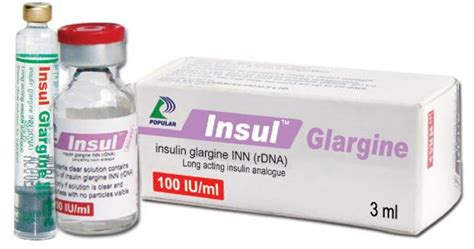Insulin Glargine for Prolonged Blood Sugar Control
Insulin Glargine FAQ
What is insulin glargine used for?
Insulin glargine is a long-acting insulin used to treat type 2 diabetes and type 1 diabetes in certain patients to improve blood glucose levels. Includes Insulin glargine brands, uses side effects doses and interactions.
Is insulin glargine a long-acting insulin?
Insulin glargine is a long-acting insulin. If you have type 1 diabetes, it must be used in combination with short- or rapid-acting insulin. If you have type 2 diabetes, this drug may be used alone or with other medications. Insulin glargine is used to reduce blood sugar levels in adults and children with type 1 diabetes.
Can insulin glargine be used with other insulin?
In people with type 1 diabetes, insulin glargine products must be used with another type of insulin (a short-acting insulin). In people with type 2 diabetes, insulin glargine products also may be used with another type of insulin or with oral medication (s) for diabetes.
What brand is insulin glargine?
Brand names: Lantus, Basaglar, Toujeo. Insulin glargine comes only as an injectable solution. Insulin glargine injectable solution is used to control high blood sugar (hyperglycemia) in people with type 1 and type 2 diabetes. What is insulin glargine? Insulin glargine is a prescription drug. It comes as a self-injectable solution.
What is insulin glargine?
Insulin glargine is a long-acting insulin used to treat type 1 and type 2 diabetes in certain patients to improve and maintain blood glucose levels. Insulin glargine is a man-made form of human insulin that is used once daily to provide a base level of insulin that keeps working for 24 hours or longer.
What are the side effects of insulin glargine?
In patients with type 1 diabetes, insulin glargine must be used together with a short-acting insulin. Common insulin glargine side effects may include low blood sugar, swelling, weight gain, allergic reaction, itching, rash, or thickening or hollowing of the skin where you injected the medicine (lipodystrophy).
When should insulin glargine be used for glycemic control?
In adults with type 2 diabetes, insulin glargine, or another long-acting insulin, should be initiated for glycemic control after 2 or 3 oral antidiabetic medications have failed to attain glycemic control or in patients with a hemoglobin A1c value higher than 9% who are experiencing symptoms.
Insulin Glargine References
If you want to know more about Insulin Glargine, consider exploring links below:
What Is Insulin Glargine
- https://www.drugs.com/insulin-glargine.html
- https://en.wikipedia.org/wiki/Insulin_glargine
- https://bnf.nice.org.uk/drugs/insulin-glargine/
- https://www.ncbi.nlm.nih.gov/books/NBK557756/
- https://www.nhs.uk/medicines/insulin/long-acting-insulin/
- https://medlineplus.gov/druginfo/meds/a600027.html
- https://www.healthline.com/health/drugs/insulin-glargine-injectable-solution
- https://go.drugbank.com/drugs/DB00047
- https://www.mayoclinic.org/drugs-supplements/insulin-glargine-recombinant-subcutaneous-route/description/drg-20067770
- https://cks.nice.org.uk/topics/insulin-therapy-in-type-2-diabetes/management/insulin-therapy-type-2-diabetes/
Insulin Glargine Information
Explore Related Topics
Evolving Insulin Landscape: Adapting to the Changing Treatment Paradigms
Embrace the evolving landscape of insulin therapy and adapt to the latest trends shaping the future of diabetes care.
Are there any side effects associated with long-term use of injectable diabetes medications?
Examine the potential long-term side effects of using injectable medications for diabetes management.
The Role of Mindfulness in Insulin Sensitivity
Discuss how practicing mindfulness techniques can potentially enhance insulin sensitivity in individuals with diabetes
Precision Medicine in Diabetes: Is Individualized Treatment the Key?
Delve into the concept of precision medicine for diabetes
Nanoparticles in Diabetes Treatment: A Future Game-Changer?
How can nanoparticles pave the way for innovative diabetes therapies?
Are newer injectable diabetes medications more effective?
Delve into the latest advancements in injectable diabetes treatments and their impact on managing the condition.
